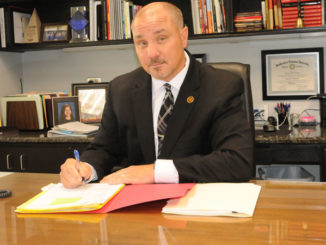
With electronic cigarette use on the rise with teenagers, an anti-vaping curriculum is being examined for future use in St. Charles Parish Schools.
“It’s a problem with these kids,” said School Board member Sonny Savoie. “They don’t realize what they’re doing to themselves.”
Students who use e-cigarettes are typically in a phase of thinking they’re invincible, Savoie said. But they don’t realize what “vaping” can do later in their lives due to an increased intake of nicotine.
“We’re trying to deal with it in the school system through education,” he said. “I don’t know how else to get the kids to understand what harm vaping is doing.”
Additionally, Savoie added, they are readily used indoors and harder to identify.
Savoie said, like other school systems, they are rolling out a program aimed at outlining how e-cigarettes can cause irreversible health issues.
“The school system is on top of it just like other systems,” he said of their initiative taking a medical approach. “It’s a health problem … mentally, physically and emotionally. We’re dealing with kids’ hormones before they think they’re invincible.”
Jerry Lewis Smith, executive director of Student Services, said U.S. Surgeon General Jerome Adams emphasized that e-cigarette education could protect children from a lifetime of nicotine addiction and related health risks.
According to Adams, “The recent surge in e-cigarette use among youth, which has been fueled by new types of e-cigarettes that have recently entered the market, is a cause for great concern. We must take action now to protect the health of our nation’s young people.”
[pullquote]“We’re trying to deal with it in the school system through education.” — Sonny Savoie[/pullquote]Smith said nicotine discipline infractions are on the rise in the school system, as well as the nation.
E-cigarettes entered the U.S. marketplace around 2007, and since 2014 they have been the most commonly used nicotine product among U.S. youth. E-cigarette use among U.S. middle and high school students increased 900 percent during 2011-15, before declining for the first time during 2015-17. However, current e-cigarette use increased 78 percent among high school students during the past year, from 11.7 percent in 2017 to 20.8 percent in 2018.
In 2018, more than 3.6 million youths, including 1 in 5 high school students and 1 in 20 middle school students, used e-cigarettes, according to a 2018 Morbidity & Mortality Weekly Report
“Subsequently, we are working to have a system in place to collect vaping data in the upcoming school year,” Smith said. “At this time, we are exploring prevention education curriculums relative to vaping for possible implementation in the future.”
The curriculum would be used in high schools and possibly middle schools, she said.
Savoie said students need to understand ramifications of e-cigarette use.
“Why would you want to ruin your life?” he said. “You have more life after high school. There’s a big world out there for you to conquer. If your brain is fried you can’t do it.”




Be the first to comment